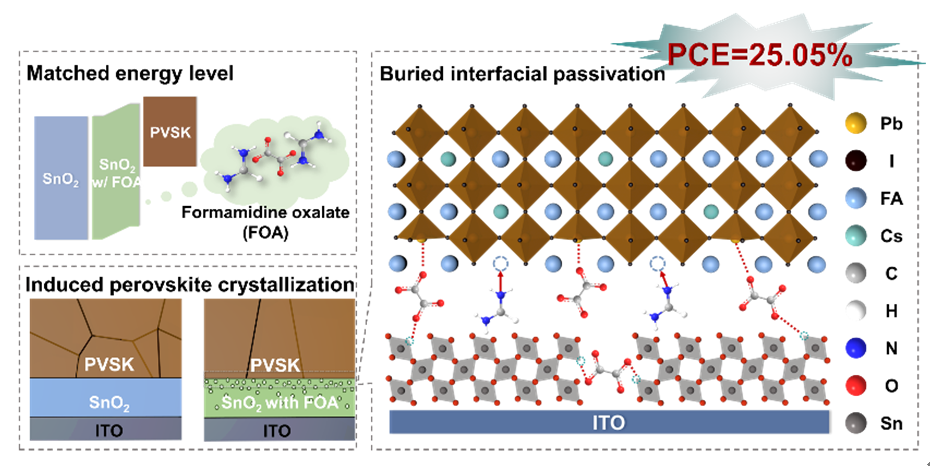Research Progress
SnO2 is a commonly used electron transport material for n-i-p PSCs due to its high light transmittance and electron mobility, suitable energy levels, good stability under UV irradiation, and can be processed at low temperatures. The buried interface of perovskite/SnO2 plays a crucial role in achieving high efficiency and stability. However, the non-exposed buried interface is challenging to study and manipulate.
Motivated by such a challenge, Dr. JI Xiaofei, the assistant researcher in LU Linfeng team at Shanghai Advanced Research Institute (SARI) of the Chinese Academy of Sciences, collaborated with researchers from the Southern University of Science and Technology and the City University of Hong Kong, reported a facile and effective strategy that is employed for precisely modulating the buried interface through the incorporation of formamidine oxalate (FOA) in a colloidal SnO2-based ETL.
The research results were published in the Advanced Materials on July. 17th.
According to research findings, both formamidinium (FA+) and oxalate ions show a longitudinal gradient distribution in the SnO2 layer, and mostly accumulating at the SnO2/perovskite buried interface. The modified SnO2 exhibits higher Fermi level, which induces the better energy level alignment between perovskite and SnO2-FOA, and helps avoid carrier accumulation at the interface and improves open-circuit voltage.
Moreover, the FOA can also modulate the crystal growth of upper perovskite films, which enables high-quality perovskite films with minimized grain boundaries and superior interface contacts.
Significantly, FA+ cations and oxalate anions can suppress the VO and Sni defects on the SnO2 surface and the FA+/Pb2+ associated defects at the perovskite buried interface contemporaneously, which contribute to achieve target defect passivation. Ultimately, the FOA-modified buried interface significantly increases the champion PCE to 25.05% with enhanced stability of corresponding devices under light, heat, and moisture conditions.
The study provides an in-depth understanding of the perovskite buried interface and an effective target therapy to improve the optoelectronic properties of PSCs.

The schematic diagram of modulating interfacial energy level, regulating perovskite crystal growth, and reducing interfacial defects for FOA (Image by SARI)





